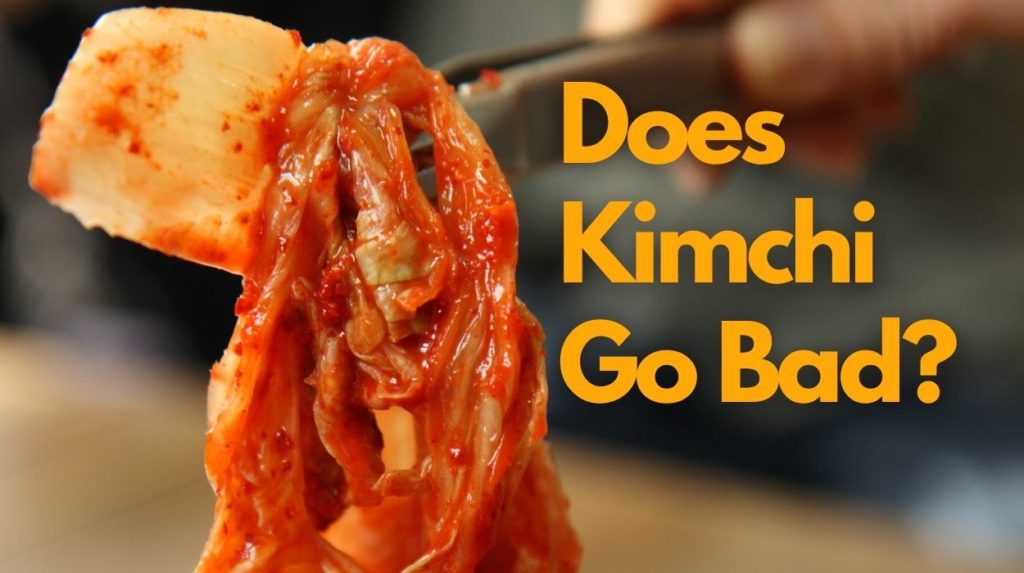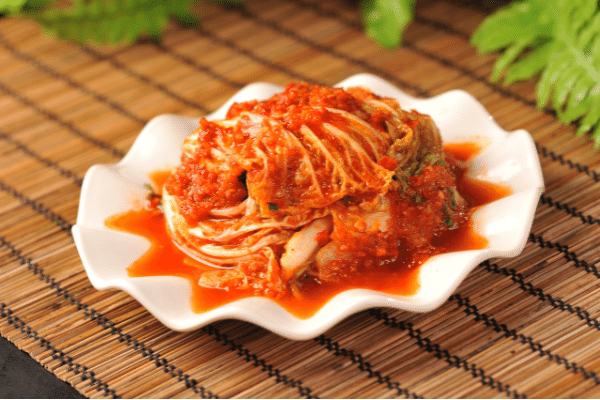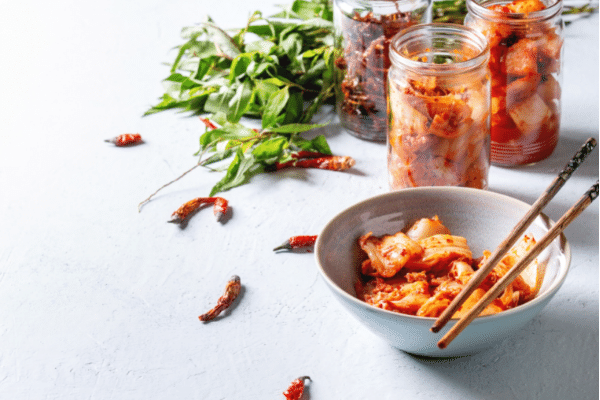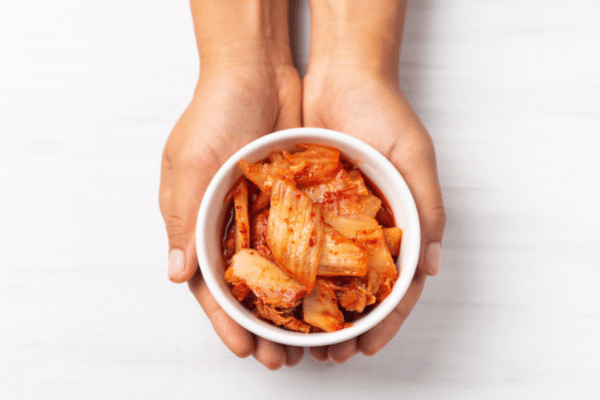
With its spicy, sour, and umami flavor, Kimchi holds a crucial place in Korean cuisine. While it is mainly served as a side dish, some might even prefer it as a main dish.
But it can be difficult to complete it in one go, especially if you are trying it for the first time, especially for those who have a low spice tolerance. While the remaining Kimchi can be stored in the refrigerator, it wouldn’t last long due to its perishability.
If you want to relish the exotic sources and spiciness of Kimchi, we suggest going through the following article as we have mentioned the best methods to store Kimchi. Read on and never let your favorite Korean ingredient go bad.
What is the Difference Between Unpasteurized and Pasteurized Kimchi?

Unpasteurized Kimchi is raw Kimchi that retains the natural gut bacteria. The gut bacteria are known to be desirable to aid in digestion and help add flavor to the Kimchi. These bacteria keep growing as the Kimchi ferments over days.
On the other hand, pasteurized Kimchi is the heat-treated form for sterilization purposes. Any food that changes quality due to temperature or microbial growth needs pasteurization.
However, pasteurized Kimchi does not usually retain the desirable gut bacteria, which may affect its flavor and properties to an extent. But, to reduce the microbial load and prevent the Kimchi from spoiling due to bad bacteria, pasteurization is an essential and safe step.
Tip: A good alternative is to use kimchi that is prepared by slow pasteurization – safe to consume with no dip in flavors.
How Long Does Kimchi Last?
Kimchi is made from vegetables like cabbage, radish, onion, garlic, ginger, etc. These ingredients are mixed and topped with vegetable brine. The mixture is then allowed to ferment, which adds to the sour taste and flavor of Kimchi. Some people also use rice vinegar or apple cider vinegar to add to the sourness of the dish.
You need to make sure to keep the Kimchi in an airtight container and sterile environment. This is because it is prone to bacterial growth and can get easily contaminated by E.Coli, Salmonella Typhi, etc. These bacteria are known to cause food poisoning.
When the Kimchi gets fermented in the brine, it develops useful lactic acid-producing bacteria. These beneficial bacteria add to the overall sourness and taste of the Kimchi.
At room temperature:
If you keep it in sterile, airtight containers, Kimchi will last for a good 3-4 days at room temperature. This also depends on the environment being hot or cold in general. If cold, it may stay for a few more days than usual. The maximum Kimchi can stay at room temperature after opening is one week.
In the refrigerator:
The Kimchi will last for 3-6 months if you keep it in the refrigerator. During this stage, it continues to ferment and keeps growing sourer. However, you need to make sure you store it at a temperature below 4°C because warmer temperatures can cause spoilage.
Depending on how you like the flavor and taste of Kimchi, you can store it for longer periods. If you prefer it to be sour, store it for longer, or discard it soon. The longer you store it, the mushier and softer the vegetables get. The flavor gets very strong; the vegetables lose their crunch. People who like milder flavored Kimchis may not like the taste then.
The minimum number of days you can store a Kimchi is three months. After that, you need to keep track of signs of spoilage. If the Kimchi has turned too sour, you can mix it with rice or stew to mellow the flavor.
In short, please remember:
Unpasteurized Kimchi:
- Has to be stored in the refrigerator as the shelf life is one month.
Kimchi (unopened and pasteurized):
- Best for 1-3 months at room temperature
Kimchi (opened and pasteurized):
- 3-4 days at room temperature
- Up to 6 months in the refrigerator
How To Tell if Kimchi has Gone Bad?

Kimchi is a bit complex when it comes to an understanding if it has gone bad or not. The mixture keeps getting sourer, which is not a factor determining if the Kimchi is still edible or safe to use.
However, there are several ways we have suggested that make it easy to identify if your Kimchi has gone bad or not. They are:
Molds
Kimchi is made of leafy and easy to perish vegetables like cabbage, radish, etc., or it may even contain non-vegetarian ingredients like fish or oysters. These ingredients can develop molds very easily.
Often if the ingredients of Kimchi are not submerged in the brine properly, they get spoilt and develop molds. These molds appear like small dot-like growths on the vegetable surface, which are usually black, blue, or green. Molds are formed due to improper storage and temperature conditions of the Kimchi.
Taste
Kimchi is generally sour to taste. The sourness you prefer depends on your tastebuds. The sourer it tastes, the more the ingredients have fermented. If you like it sourer, you may want to store it longer. If the sour taste ticks you off, it’s time you discard the Kimchi.
However, we suggest that taste is not the only factor you should rely on for spoilage. Sour-tasting kimchi may have also developed some undesirable bacteria. Therefore, looking for other factors is also important.
Smell
Kimchi has a very pungent and typical smell. If it smells pungent, it’s quite normal. However, if it starts smelling like alcohol or has an off smell that does not normally smell like Kimchi, then it’s time you discard the mixture.
The Kimchi may also smell like rotten vegetables when attacked by molds. It would be best if you immediately discarded the Kimchi in such cases.
Appearance
The vegetables used in Kimchi start becoming softer and mushier as days pass. These vegetables might lose their crunch and texture, which is perfectly normal.
If you prefer it crunchy, then the Kimchi can be discarded. Else you can cook it or mix it with rice or stew to mellow the sour taste.
Best Before/Expiration Date
Packaged or store-bought Kimchis usually come with an expiration or best before date. Ideally, Kimchi can stay for months in the refrigerator, but the best before date is to determine its shelf life in the pantry.
Pickles don’t usually come with an expiration date, but the quality can deteriorate over time. The same, my folks, is the case with Kimchi! If it has crossed the best before date on the shelf, discarding the bottle is advisable.
What Happens if you eat Expired Kimchi?

Kimchi does not easily perish and rather matures with age. However, the ingredients like cabbage, radish, etc., can form fungus easily. The mycotoxins in the fungus and molds can cause food poisoning, which leads to vomiting, diarrhea, weakness, and dehydration.
People with weakened immune systems can get easily affected by even small microbial growth in Kimchi. Especially if your Kimchi contains pickled seafood, it is susceptible to spoiling easily and grows bacteria.
It can cause botulism, paralytic shellfish poisoning, or Anisakiasis infection. These diseases are characterized by vomiting, respiratory disorders, bowel blockage, and other deadly conditions.
You need to be careful even if you smell the Kimchi for signs of spoilage. The molds can easily enter through your nostrils and cause respiratory blockage. Therefore, you must always be careful about storing your Kimchi in appropriate places, away from high temperatures.
Additionally, if you are making Kimchi at home, use washed and clean vegetables and seafood. Hygenic preparatory practices prevent the growth of unwanted and harmful bacteria.
If you are buying a packaged Kimchi, make sure to purchase it from a renowned and trustworthy brand that follows hygienic manufacturing practices.
How to Store Kimchi?

The process of storing Kimchi is similar to storing pickles. Since it consists of vegetables added to brine for fermentation, the fermentation process goes on! If you store the Kimchi jar in the refrigerator, the fermentation will slow down, and the Kimchi will last longer.
The methods for storing pasteurized and unpasteurized Kimchi is slightly different! Let’s talk about unpasteurized Kimchi first!
Storing Unpasteurized Kimchi:
Kimchi is usually sold in an unpasteurized form to retain the naturally growing bacteria. These bacteria make the Kimchi sour and add flavor to the mixture.
You can store it at room temperature if the bottle is sealed. Once you open it, make sure to keep it in the refrigerator. You can also keep it at room temperature for a few days, but the Kimchi would taste very sour, and the jar might explode upon opening due to the release of gases.
Keep the bottle sealed tightly at all times and store it in a pickle jar for safety. If not, you can also store it in an airtight container and prevent exposure to direct heat and the outside environment.
The vegetables in the mixture should always be suspended in the brine to not dry out and get spoilt. Make sure that the storage container or jar is sterile to prevent the growth of unwanted bacteria or molds.
If you want your Kimchi to taste a bit sour and don’t like the flavor as much, you can always remove it from the refrigerator and keep it in the sink. Make sure to keep the jar sealed and let it stay overnight. Please put it back in the fridge in the morning.
The overnight outer environment exposure allows the fermentation bacteria to release some liquids, which helps enhance the flavors of the Kimchi. Try it in the afternoon, and the Kimchi would taste rather delicious!
Storing Pasteurized Kimchi:
If you get a pasteurized or heat-treated Kimchi, you can store it at room temperature longer when unopened. After opening, it is again advisable to store it in the fridge, though it can stay outside for a few days.
Just make sure to keep it away from direct sunlight or heat. Seal the jar properly at all times.
Even if you transfer the Kimchi to any other utensil, make sure it remains moist and that the utensils are clean. Kimchi itself is too acidic to allow the growth of any bacteria, but you may not want to risk by not considering hygienic practices.
Freezing Kimchi
Frozen Kimchi lasts for 3-4 months after opening the bottle. Kimchi is suspended in salted brine, which allows it to last longer; the brine serves as a preservative. However, if you want to prevent the Kimchi from getting spoilt and savor the pickled goodness, you can always freeze it.
You can easily defrost it in small portions when you consume Kimchi and restore/refreeze it again. However, following the right protocol would help you store it the right way in a freezer. The protocol is the same for homemade or store-bought Kimchi, or even if it’s pasteurized on unpasteurized.
Here is how you can store it:
- Remember not to store kimchi in a glass jar in a freezer. Glass bottles can usually crack in extreme temperatures, which will make the Kimchi useless.
- Even if the packaging is unopened in a glass jar, make sure to transfer it with the brine in an airtight container for safety.
- You can also use a freezer-friendly zip-top bag and store the Kimchi in smaller portions in these bags.
- When storing in a container, make sure to use a compact container that appropriately holds the Kimchi quantity. Do not leave too much space in the container, as you want minimal contact with air.
- Do not fill right to the brim either. Leave some space between the Kimchi and the lid as the brine expands when it freezes.
- When storing in zipper bags, remove all the air from the bags before filling in the Kimchi and then seal it. You can store the Kimchi in batches in zip-top bags.
- Place them flat in the freezer to distribute the temperature evenly. This also helps save space in the freezer while you can store multiple bags on top of the other.
- If you have a store-bought Kimchi that has already come in plastic packaging, then you can directly store it as is in the freezer.
You can follow the same set of steps for homemade Kimchi. The best way is to store them in batches in zip-top bags. Just make sure the bags are vacuumed before sealing the Kimchi and storing them in the freezer.
Your Kimchi will easily last for several months if stored following the above steps. However, there can be slight changes in the crunch, texture, and flavor.
How to Defrost Kimchi?
You do not defrost the Kimchi at room temperature like other food items. Sudden temperature changes can spoil the texture and flavor of the Kimchi. Instead, it would help to transfer it to the refrigerator first before introducing it to room temperature.
If you thaw it at room temperature, Kimchi will become too mushy. For quicker defrosting, we suggest taking the required limited quantity and transferring it to the fridge for thawing.
If using it with a hot dish like rice or stew, the crispiness is not important. You can directly add the frozen Kimchi to the hot dish. The dish’s heat will thaw the brine and incorporate the flavors of the Kimchi into the dish.
Is it ok to refreeze Kimchi?
We suggest you not refreeze the Kimchi. Freezing expands the cells of the mixture and makes it mushy. Sudden temperature changes will overly spoil the flavor and texture of Kimchi.
Pro Tip: Always defrost or store the Kimchi in smaller portions. Defrost only as much is required, so there would be no need to refreeze it again.
However, if there is any leftover defrosted Kimchi, you can refreeze it and use it for other preparations where the texture is not important. The best way to utilize them is in:
- Dumplings
- Soups
- Stews
- Rice preparations
- Sauces
- Fritters and Pancakes
Alternatives for Kimchi if it Goes Bad
If the kimchi in your refrigerator goes bad, you can try the following alternatives:
- Sauerkraut
- Pickled beets
- Miso paste
- Radish Kimchi
- DIY kimchi
How to Prepare DIY Kimchi?
If you require the original taste and texture of kimchi, you can prepare it at home. Don’t worry, the recipe is pretty simple.
Ingredients:
- Napa cabbage
- Scallions
- Carrots
- Miso or Fish sauce
- Korean Chili Flakes
Steps:
Start by cutting the cabbage into cubes and adding sea salt. Transfer the cabbage to a bowl of water and let it soak for 6-8 hours. Remember to place a plate over the bowl.
After the time period, rinse the cabbage and save the brine.
Cut carrots and scallions and place them with the cabbage, along with miso paste and chili flakes. Mix well and transfer to a jar, leaving some space on the top. Pour the brine till the cabbage gets covered. Cover it with a cabbage leaf and leave it in a dark and cool place.
Let it ferment for 2-3 days.
FAQs
Is Kimchi bad for you?
Kimchi is prepared by fermentative bacteria, which are also good for gut health. However, people with sensitive digestive systems and weak immune systems may get adversely affected due to these fermentation bacteria. Therefore, such people should be extra careful before consuming Kimchi, especially if it’s old and stored longer.
Is Kimchi the same as a pickle?
Almost! Kimchi is a pickle type made through a fermentative process, which runs on similar grounds as a pickle. The ingredients in a pickle and Kimchi might differ, but the storage and handling processes are almost identical.
Does unopened Kimchi need to be refrigerated?
Not necessarily! Unopened, unpasteurized Kimchi can stay at room temperature for up to a week. After which, it is safe to refrigerate it if you want to increase its shelf life.
Unopened pasteurized Kimchi can stay in the pantry for longer than a week. Just make sure to store it away from heat and direct sunlight.
The Bottom Line
The sour and tangy, crunchy flavors of Kimchi are very desirable. It blends well as a sider with any stew or rice preparation, even when mixed with a hot, piping dish. However, the main hassle is to store an open bottle of Kimchi for longer.
The ultimate storage and handling depend on how sour or flavorful you prefer your Kimchi to be! Store it in airtight containers or jars, away from direct sunlight or heat exposure. Storing it in the fridge is the best bet, but it may slightly spoil the texture and flavor.
Please read our article above and tell us how you like to store and eat your Kimchi through the comments section below!
Until then, eat Kimchi and savor the sourness!



